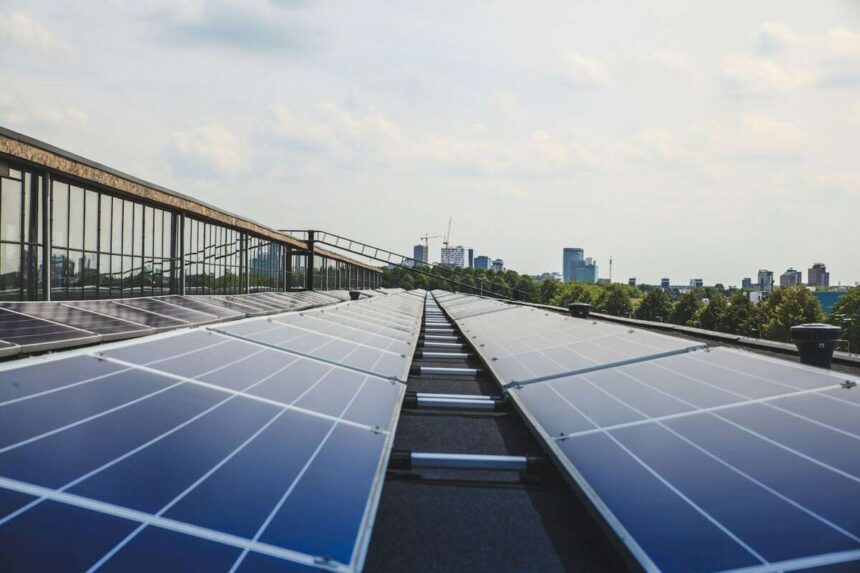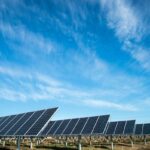Energy efficiency is crucial in tackling climate change as it cuts costs and strengthens security. Reducing energy waste helps lower greenhouse gas emissions, making energy efficiency crucial to achieving climate goals. At the same time, greater efficiency translates to lower utility bills for households and businesses. It creates a more reliable grid that’s less dependent on foreign resources.
For the U.S., hitting energy efficiency targets by the end of 2025 means tackling several ambitious milestones, including reducing carbon emissions and improving building performance. Achieving these goals requires collaboration between energy professionals, policymakers and the public to build a sustainable future that benefits everyone.
-
Reducing Carbon Emissions in Energy Generation
Transitioning to cleaner energy sources reduces the sector’s environmental impact. The U.S. has set an ambitious target to cut greenhouse gas emissions by as much as 28% below 2005 levels by 2025. Meeting this goal hinges on accelerating the deployment of renewable resources like wind, solar and hydro, which offer cleaner, more sustainable alternatives to fossil fuels. Tapping into these resources can lower emissions while creating a more resilient system that supports long-term growth.
Achieving this shift also requires modernizing the grid and investing in advanced storage solutions to seamlessly integrate renewable energy. These upgrades ensure reliable distribution, even when the weather doesn’t comply. Meanwhile, advocating for cleaner electricity providers and supporting renewable energy projects on local and national levels can empower businesses and individuals to make greener choices. These efforts facilitate a cleaner, more efficient future benefiting the environment and the economy.
-
Improving Building Energy Efficiency Standards
Buildings account for 40% of global energy consumption, making efficiency in this sector a high priority. Updating building codes and adopting eco-friendly design practices are crucial to reducing demand and lowering costs for homeowners and businesses.
For example, green roofs are a simple yet impactful solution. Compared to traditional models, they can reduce rooftop temperatures by 30 to 40 degrees Fahrenheit and cut structural energy use by 0.7%. These innovations slash consumption, improve comfort and contribute to a more sustainable future.
Energy professionals are at the forefront of this transformation by educating clients about efficiency incentives and introducing modern technologies that maximize building performance. Programs offering federal and state rebates for energy-efficient home upgrades motivate homeowners to take action. Making these improvements more affordable and accessible drives widespread adoption and helps the U.S. achieve its milestones while delivering long-term savings to customers.
-
Advancing Transportation Electrification
Transportation is a leading source of greenhouse gas emissions, making the transition to electric vehicles (EVs) critical for a cleaner future. Electrification reduces environmental impact, and the U.S. is making significant strides to support this shift. Expanding EV infrastructure — including a robust network of charging stations — is at the forefront of these efforts.
Federal and state incentives also make EV ownership more affordable, encouraging consumers and businesses to switch. These initiatives ensure drivers can confidently travel long distances while reducing their carbon footprint.
Beyond infrastructure, improving grid readiness is essential to handling the growing demand for electricity as EV adoption accelerates. Energy professionals work to modernize the grid to ensure it can support widespread use without disruption. On an individual level, transitioning to EVs and participating in ride-sharing programs with electric fleets are practical ways to contribute to lower emissions. These actions create a more sustainable transportation system, proving electrification is a present-day priority.
-
Increasing Energy Storage Capacity
Energy storage ensures grid stability and accelerates the adoption of renewables. Advanced battery technologies and scalable storage solutions help balance supply and demand. However, the limited availability and rising cost of essential metals used in batteries can significantly impact efficiency strategies. Price fluctuations often strain project budgets, forcing stakeholders to cut back on implementing new technologies, which slows progress toward clean energy goals.
To overcome these challenges, the industry prioritizes research into cutting-edge storage technologies relying on alternative materials or more efficient designs. Small-scale energy storage solutions — such as home and business battery systems — are also gaining traction. These systems provide reliable backup power while reducing dependence on the grid, making them an attractive option for homeowners and small businesses.
Embracing innovative technologies and diversifying resources can mitigate cost barriers. They ensure energy storage remains a driving force behind a cleaner, more resilient future.
-
Expanding Energy Education and Workforce Development
A skilled workforce can meet the rising demand for clean solutions and efficient systems. To support this, the U.S. Department of Energy has set ambitious goals, such as building a solar workforce of at least 300,000 diverse employees by 2025. These initiatives emphasize the need for robust training programs to prepare professionals for the clean energy sector’s rapid growth. From solar panel installation to efficient system design, knowledgeable, well-trained individuals at the helm drive progress in this field.
Energy professionals can stay ahead by participating in upskilling programs, attending industry events and earning certifications in emerging technologies. Workshops and community programs also provide opportunities to deepen their understanding of progressive practices while building connections with local stakeholders. Equipping themselves with the latest skills and insights strengthens professionals’ careers and helps the country meet its efficiency goals.
-
Promoting Smart Grid and Demand Response Technologies
A smarter grid enhances the energy landscape by optimizing use, minimizing waste and seamlessly integrating renewables into the system. Recognizing its potential, the Biden-Harris administration has committed $3.9 billion to the Department of Energy’s Grid Resilience and Innovation Partnerships (GRIP) Program. This investment is geared toward strengthening grid infrastructure and implementing advanced technologies that ensure a reliable and efficient supply.
One critical innovation is advanced metering infrastructure, which tracks energy consumption in real time and empowers utilities and consumers to make smarter decisions.
Smart grid technologies and demand response programs also help balance demand during peak times and improve overall efficiency. Consumers can adopt smart home devices — such as programmable thermostats and energy monitoring systems — to manage their use effectively. Investing in these technologies and encouraging participation from businesses and households builds a resilient grid. This way, it can handle the fluctuations of renewables while reducing waste and costs.
Building a Sustainable Energy Future Together
Achieving a sustainable future requires a collaborative effort from energy professionals and the public. Both groups must adopt cleaner technologies, improve efficiency and advocate for progressive policies. Everyone can contribute to building a more resilient landscape by taking immediate action, whether through industry innovation or personal choices like upgrading to energy-efficient systems





